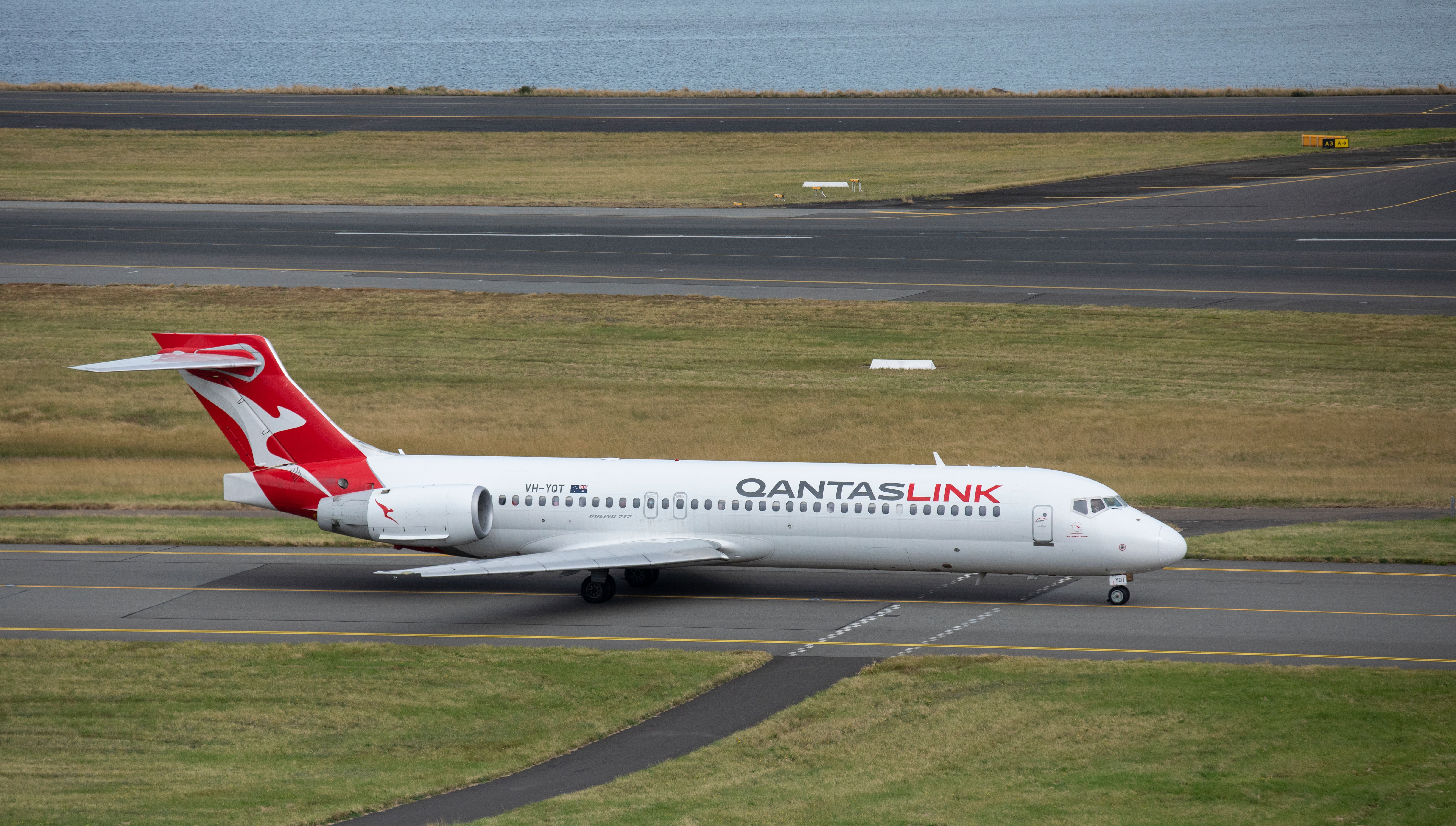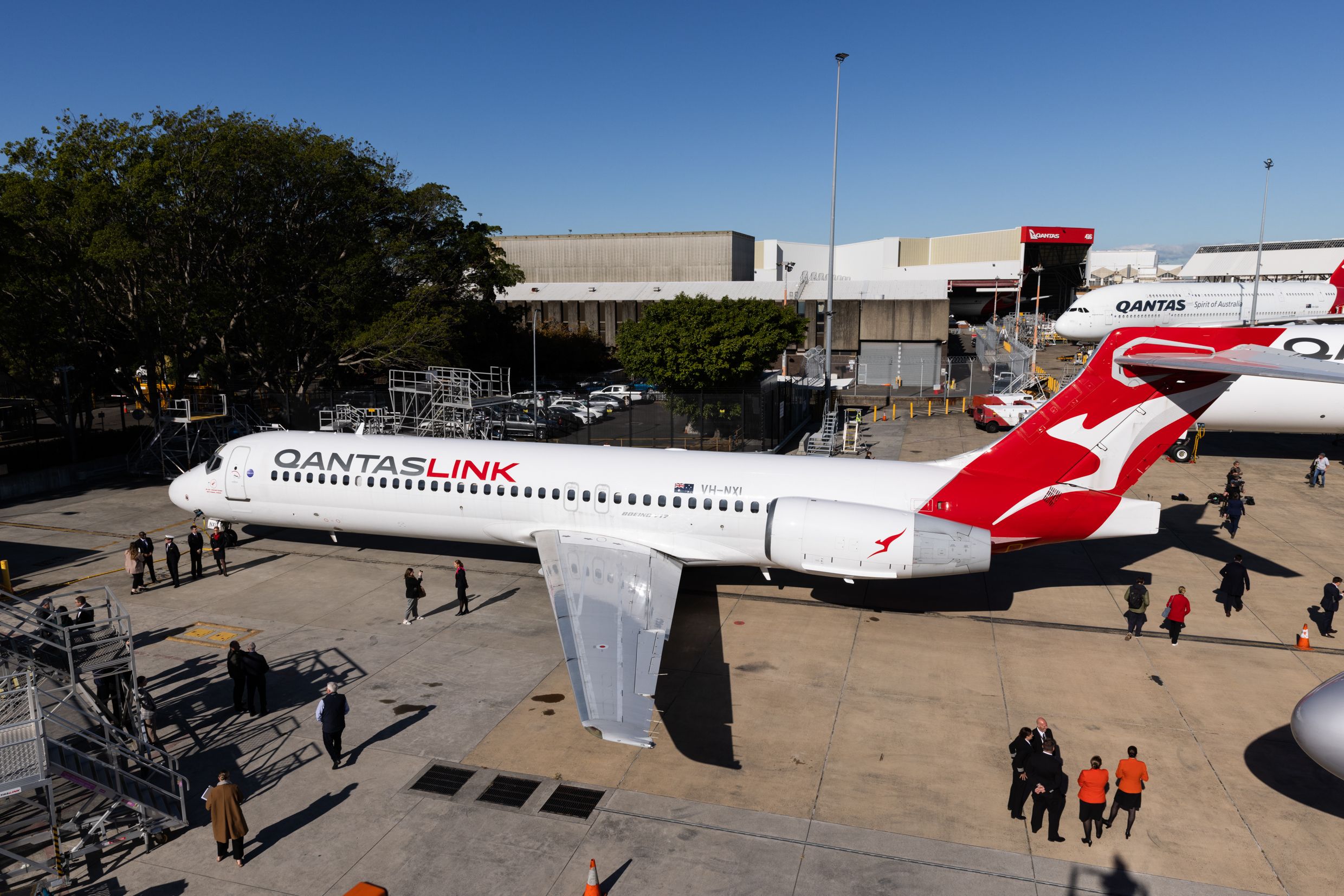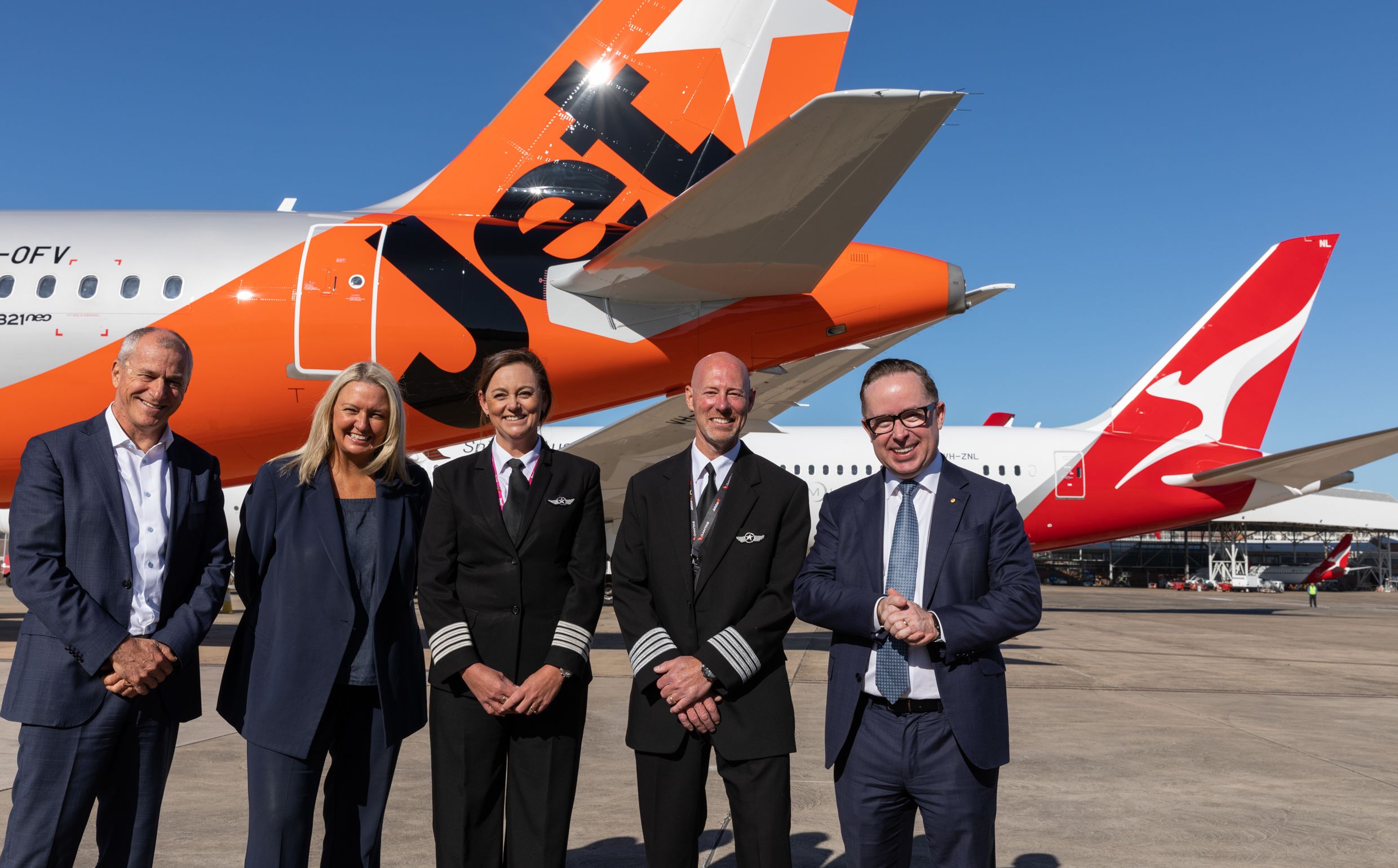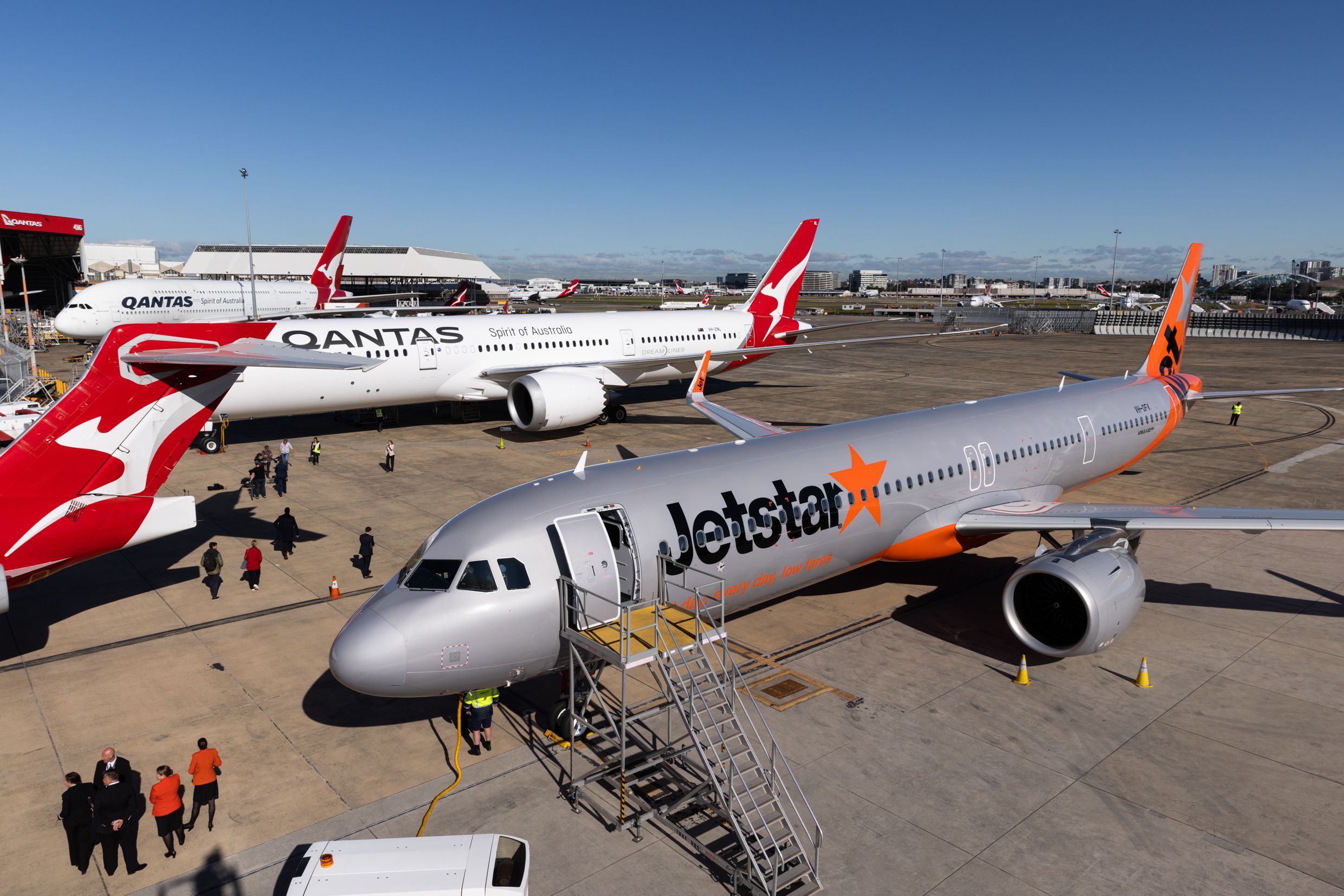This may well sound a bit harsh and lacking in airline nostalgia, but today it was out with the old and in with the new at Qantas, although that's certainly not a reference to the CEO's imminent departure.
Today, Australia's national carrier Qantas marked the end of an era by announcing the departure of the first Boeing 717 registered in Australia. The aircraft, MSN 55054, was built last century (1999) and arrived in Australia in April 2000, joining the fleet of Impulse Airlines and carrying registration VH-IMP.
A long career in the Qantas Group
Following the takeover of Impulse Airlines, the 717-200 moved into the QantasLink fleet in May 2001 before joining the Jetstar fleet, operating the new airline's first flight in May 2004.
In January 2006 it was reregistered as VH-NXI and for the last sixteen years, the 717-200, named Blue Mountains after the world-heritage-listed national park in New South Wales, has flown on regional and domestic routes for QantasLink. Over two decades, it has operated more than 29,000 flights and carried more than 1.6 million passengers for Qantas and Jetstar.
The aircraft is the third Boeing 717 to leave the fleet and is due to leave Australia in mid-June before being sold to another major carrier. Qantas said that, because of the aircraft's limited range, it will have eight fuel stops on its journey to its new home in North America, including stops in the Philippines, Japan and Alaska.
New plane every three weeks
All of QantasLink's twenty 717s are being replaced by 29 Airbus A220s as part of the Qantas Project Winton fleet renewal program. The first A220 is expected to arrive later this year, and then the first of 20 Airbus A321XLRs will follow in late 2024.
Today's ceremony was held at the Qantas Jet Base at Sydney airport, where the departing 717 was flanked by the two latest arrivals, a Qantas Boeing 787-9 Dreamliner and a Jetstar A321neo. On hand at today's gathering at the jet base was Qantas Group CEO Alan Joyce, who was joined by Jetstar CEO Stephanie Tully and pilots and crews from the two carriers.
Joyce said it was the end of an era for the Boeing 717s and that they have played a crucial role in connecting Australians across the domestic and regional network for more than two decades. He added:
"It's fitting that the very first 717 to be registered in this country is making way for another brand-new fleet type, the A220, which can operate double the range of the 717s opening up new domestic and short-haul international routes.
"Qantas is in the early stages of the biggest fleet renewal program in its history, with up to 299 narrowbody aircraft spread over 10-plus years as well as the A350s that will operate our Project Sunrise flights. It's an incredibly exciting time for our employees as well as our customers as these new aircraft create more opportunities and unlock new destinations."
The latest 787-9, Billabong, joined the network this month, and another two 787s will be delivered over the next few weeks, bringing the Qantas fleet of Dreamliners to 14. The induction of these Dreamliners has allowed Qantas to resume Sydney-San Francisco flights, and they will support the launch of the Sydney to New York via Auckland route, starting in June.
Jetstar is quickly building up its fleet of Airbus A321LRs, with seven now in operation on domestic routes and internationally between Australia and Bali, Indonesia. Jetstar will receive another 11 A321LRs before the end of next year.
Discover more aviation news for Australia and Oceania here
The Qantas Group, which includes Jetstar, is already receiving a new aircraft every three weeks (on average), and that will go on for the next few years. The group has received four new aircraft in 2023 and will induct another eight before the year ends.
Have you flown on a Boeing 717-200? Let us know in the comments.




